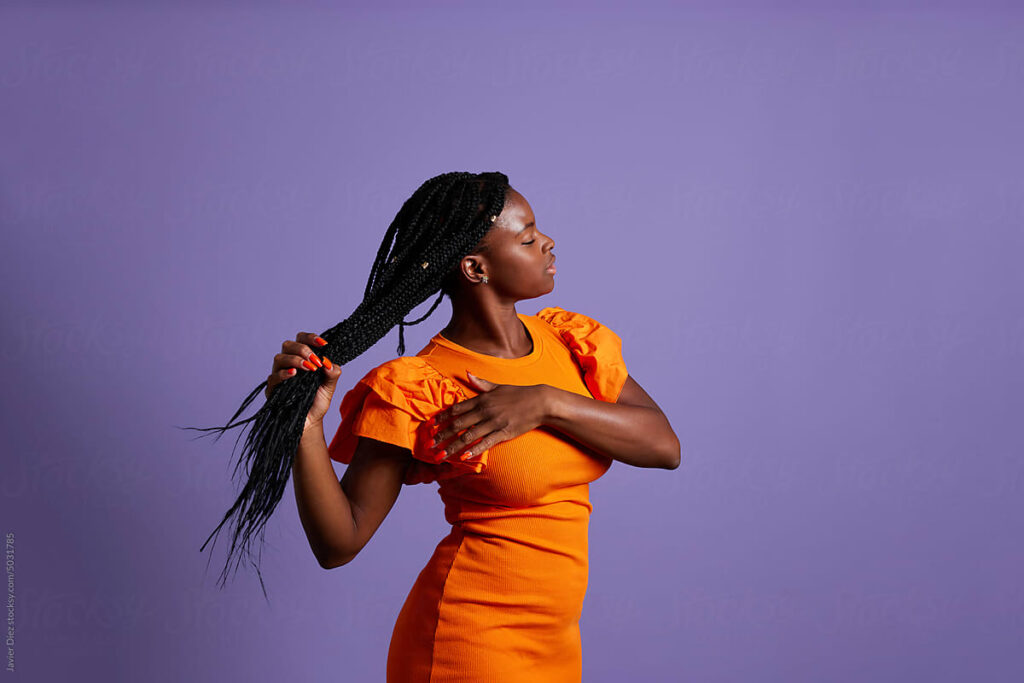One of the most important parts of producing bulk hair for braiding is the selection of raw materials, which will affect the durability, texture, and usability of the final product. For business buyers, it all comes down to materials that deliver consistent quality while also satisfying the diverse needs of professional hairstylists. This knowledge allows them to make market-consistent decisions reflecting the characteristics of the materials they deal in.
Synthetic Fibers
One of the most common types of bulk hair braiding, synthetic fiber is generally less expensive and more versatile. Synthetic fibers, such as Kanekalon and Toyokalon, are typically used for braiding as they were first developed, or none, for this purpose.
1. Kanekalon:
Soft texture and natural look make kanekalon a very popular fiber for premium synthetic hair. It resists heat and flame and is suitable for hot water styling techniques (e.g., sealing braid ends).
2. Toyokalon
This synthetic fiber is lightweight and more durable, making it ideal for longer braid styles.
Kanekalon and Toyokalon fibers come in different colors, lengths, and textures, which make them versatile.
Human Hair Sources
Human hair is still preferred for bulk braiding hair because it looks and lasts much longer. The characteristics and suitability of human hair for different applications are greatly influenced by its origin.
1. Asian Hair:
Asian hair is generally straight and thick, which styles the braid smoothly. Its high density allows it to hold more sophisticated designs.
2. European Hair:
European hair has a finer texture and works well for lightweight braiding applications and soft styles.
3. African Hair:
Tends to be coarser and used for protective braiding styles, highly favored for cultural authenticity.

Every type of hair goes through an intense process of being cleaned and sanitized, graphing and texturized to meet the standards of the industry.
Blended Material Composition
The blend of synthetic fibers and natural human hair is used to phone their benefits with this type of material.
Advantages:
Blended hair is as affordable as synthetic fibers but has the natural appearance and feel of human hair. This makes it strong and heat-styling friendly.
Customization:
Companies have the flexibility to find blends that suit particular customer needs, whether with a higher percentage of human hair for premium applications or more synthetic content for budget goods.
Environmentally Friendly and Sustainable Choices
As the demand for sustainable practices grows, Eco-friendly alternatives are emerging in the bulk hair industry.
Manufacturers are also creating synthetic fibers that are biodegradable, harming the environment less.
1. Biodegradable Synthetics:
These materials break down more easily than traditional synthetic fibers, making them a choice for eco-friendly shoppers.
2. Recycled Human Hair:
By sourcing recycled human hair for braiding, you can help reduce waste and support sustainable practices within the industry.
3. Market Appeal:
Businesses can tap into the growing demand for sustainable alternatives by providing eco-friendly materials, positioning them as innovators in the eco-market.
Conclusion
The choice of materials in bulk hair braiding is central to achieving business goals and market needs. New eco-friendly materials are also becoming more common as the industry recognizes the need for sustainable materials, and this shift provides countless opportunities for companies looking to appeal to environmentally conscious buyers. The choice of material influences product performance, marketability, and, ultimately, business sustainability.

